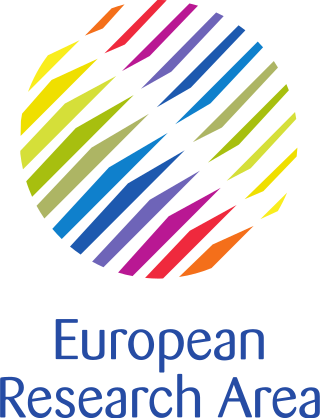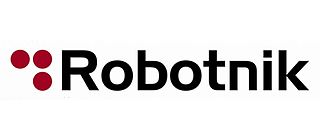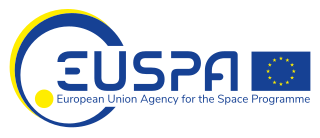Related Research Articles

Eureka is an intergovernmental organisation for research and development funding and coordination. Eureka is an open platform for international cooperation in innovation. Organisations and companies applying through Eureka programmes can access funding and support from national and regional ministries or agencies for their international R&D projects.

The European Research Area (ERA) is a system of scientific research programs integrating the scientific resources of the European Union (EU). Since its inception in 2000, the structure has been concentrated on European cooperation in the fields of medical, environmental, industrial, and socioeconomic research. The ERA can be likened to a research and innovation equivalent of the European "common market" for goods and services. Its purpose is to increase the competitiveness of European research institutions by bringing them together and encouraging a more inclusive way of work, similar to what already exists among institutions in North America and Japan. Increased mobility of knowledge workers and deepened multilateral cooperation among research institutions among the member states of the European Union are central goals of the ERA.
The Framework Programmes for Research and Technological Development, also called Framework Programmes or abbreviated FP1 to FP9, are funding programmes created by the European Union/European Commission to support and foster research in the European Research Area (ERA). Starting in 2014, the funding programmes were named Horizon.
The European Institute of Innovation and Technology (EIT) is an independent body of the European Union with juridical personality, established in 2008 intended to strengthen Europe's ability to innovate. The EIT’s three “core pillars” of activities are: entrepreneurial education programmes and courses across Europe that transform students into entrepreneurs; business creation and acceleration services that scale ideas and budding businesses; and innovation-driven research projects that turn ideas into products by connecting partners, investors, and expertise.

The Publications Office of the European Union is the official provider of publishing services and data, information and knowledge management services to all EU institutions, bodies and agencies. This makes it the central point of access to EU law, publications, open data, research results, procurement notices, and other official information.
EMBRACE was a project from the years 2005 to 2010, with the objective of drawing together a wide group of European experts involved in using information technology in the biomolecular sciences. The EMBRACE Network endeavored to integrate major bioinformatics databases and software tools, using existing methods and emerging grid service technologies.
The Competitiveness and Innovation Framework Programme (CIP) of the European Commission is meant to improve the competitiveness of European companies facing the challenges of globalization. The programme is mainly aimed at small and medium-sized enterprises (SMEs), which will receive support for innovation activities, better access to finance and business support services. It will run from 2007 to 2013.
The Integral SatCom Initiative (ISI) was an Information and Communications Technologies (ICT) European Technology Platform (ETP) led by the European SatCom industry and supported by the European Commission to address Satellite Communications (SatCom) strategic research and innovation challenges. It gathered approximately 200 member organisations representing all the stakeholders of the European SatCom sector from 29 different countries. It included members from manufacturing industry, network operations and service provision, SMEs, research centres and academia, European and National Institutions. Some international research entities do also participate. In 2013, after a public call by the European Commission to re-structure ETPs to better fit Horizon 2020 interests, ISI formally merged with Net!Works ETP to form NetWorld ETP, bringing together almost 1,000 partner organisations. NetWorld would become the partner ETP in the contractual public-private innovation partnership on 5G Infrastructures with the EU in December 2013.
The Enterprise Europe Network provides support for Small and Medium-sized Enterprises (SMEs) with international ambitions. Co-funded by the European Union's COSME and Horizon 2020 programmes, the Network's aim is to help businesses innovate and grow internationally.
The Alpine Space Programme is a transnational cooperation programme in the framework of the European Union cohesion policy. In this programme national, regional and local stakeholders from the participating countries in the Alpine space cooperate on various transnational projects.
The HPC-Europa programmes are European Union (EU) funded research initiatives in the field of high-performance computing (HPC). The programmes concentrate on the development of a European Research Area, and in particular, improving the ability of European researchers to access the European supercomputing infrastructure provided by the programmes' partners. The programme is currently in its third iteration, known as "HPC-Europa3" or "HPCE3", and fully titled the "Transnational Access Programme for a Pan-European Network of HPC Research Infrastructures and Laboratories for scientific computing".
DueDil is a company intelligence platform covering the SME economy. In August 2021 DueDil merged with Artesian Solutions and subsequently rebranded as FullCircl.

Robotnik Automation S.L.L. is a Spanish company that specializes in robot product development and robotics R&D projects. Robotnik is based in Valencia (Paterna) in Spain.
The Preservation and Long-term Access through Networked Services (PLANETS) project addressed core digital preservation challenges. The primary goal for Planets was to build practical services and tools to help ensure long-term access to digital cultural and scientific assets. The outputs of this European Sixth Framework Programme are, since 2010, sustained by the follow-on organisation, the Open Planets Foundation.
Eurodesk is an international non-profit association created in 1990. It is a European network of European, national and local information centers for young people and those working with them. It offers youth information on international learning and participation opportunities and is an organisation supported by the Erasmus+ programme (2014–2027). In 2004, Eurodesk – in cooperation with the European Commission - launched the European Youth Portal.
The European Union's scientific collaboration beyond the bloc describes the European Union's frameworks for bilateral cooperation and specific projects in science and technology, with countries and regional blocs situated beyond the European Union.
Adaptive Simulations is a Sweden-based organization that offers fully automated, cloud-based flow simulations and design optimization in a Software-as-a-Service model.

The European Union Agency for the Space Programme (EUSPA) is a space agency, managing the European Union Space Programme as one of the agencies of the European Union (EU). It was initially created as the European Global Navigation Satellite Systems Supervisory Authority (GSA) in 2004, reorganised into the European Global Navigation Satellite Systems Agency in 2010, and established in its current form on May 12, 2021. EUSPA is a separate entity from the European Space Agency (ESA), although the two entities work together closely.

The Directorate-General for Defence Industry and Space is a department of the European Commission.